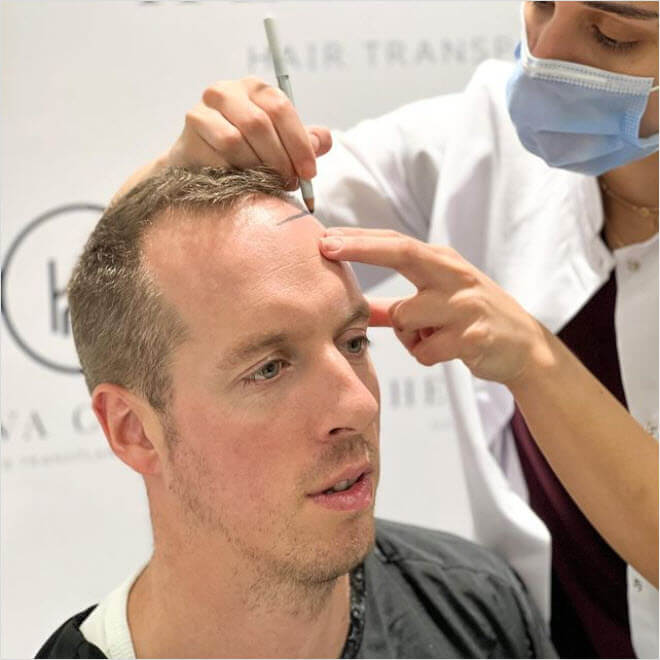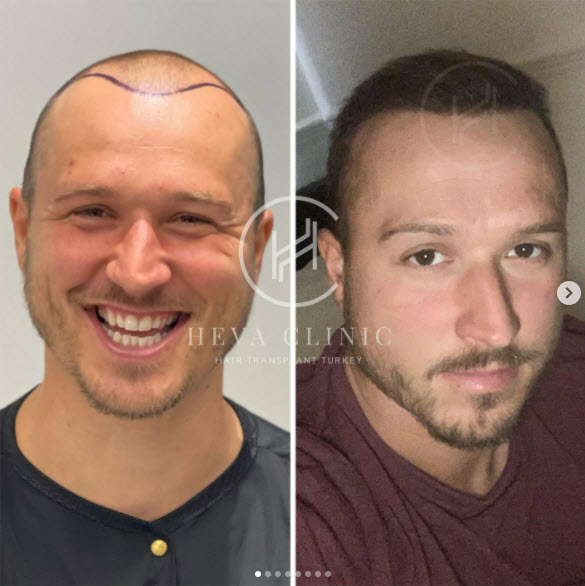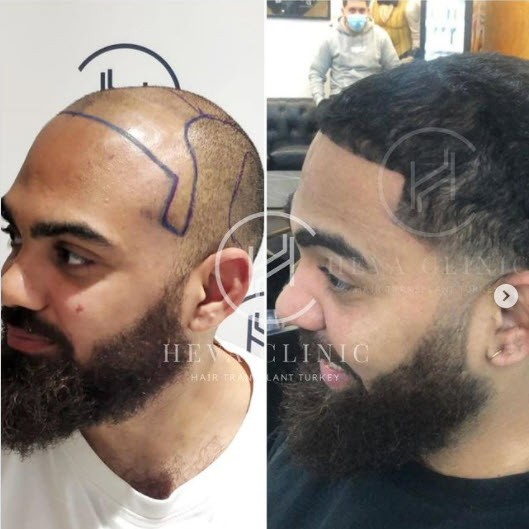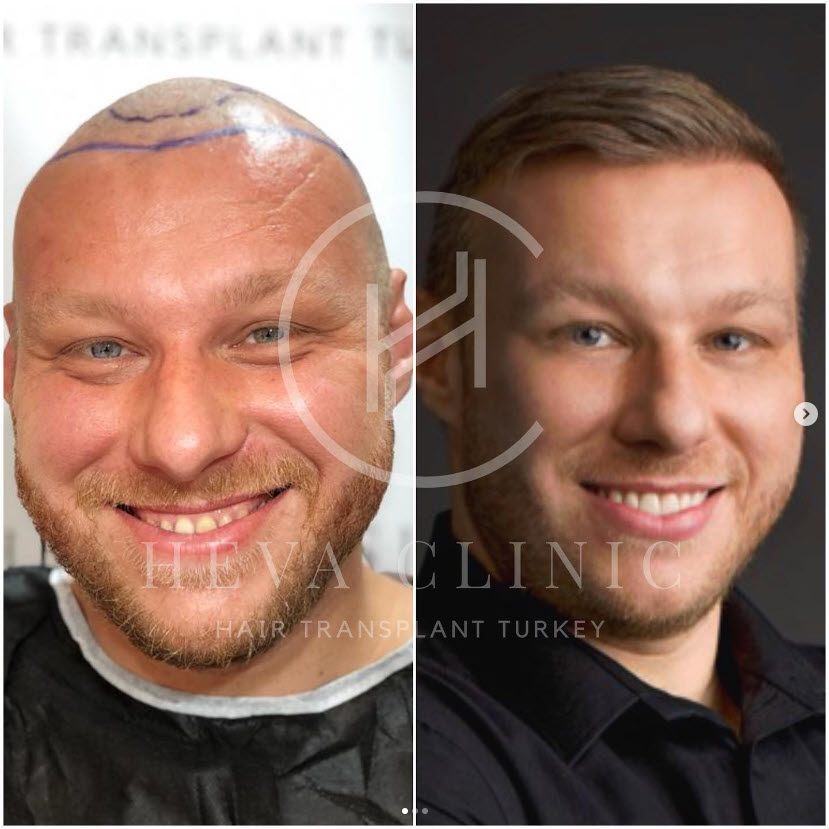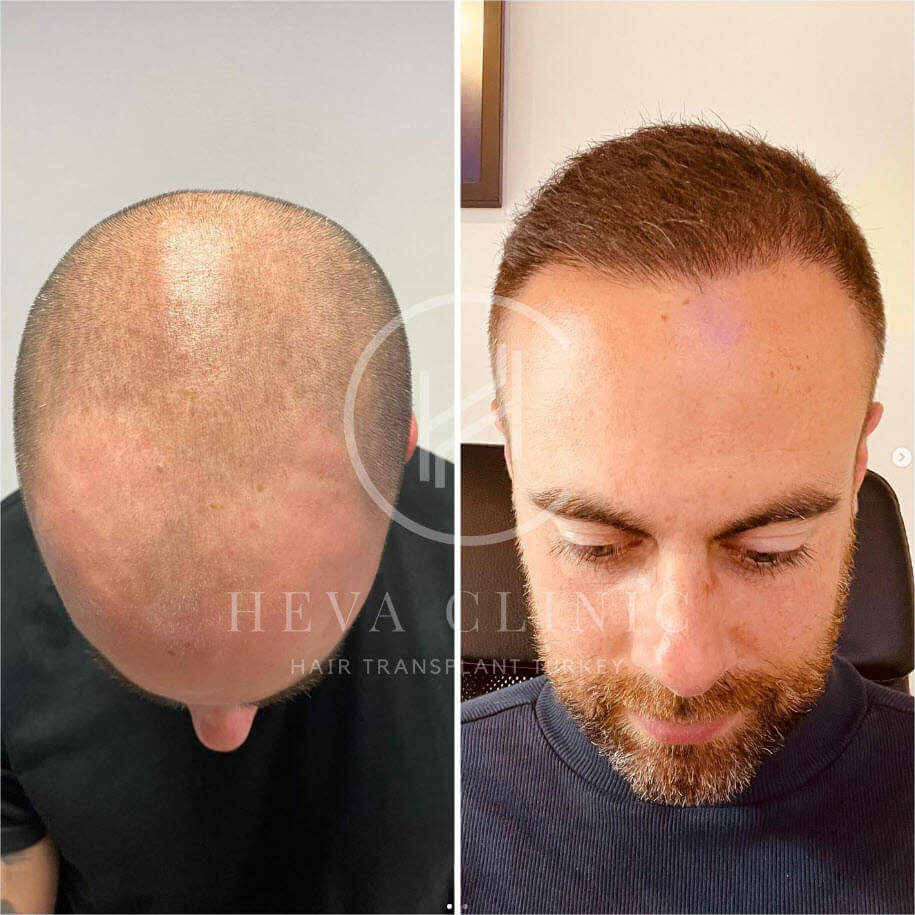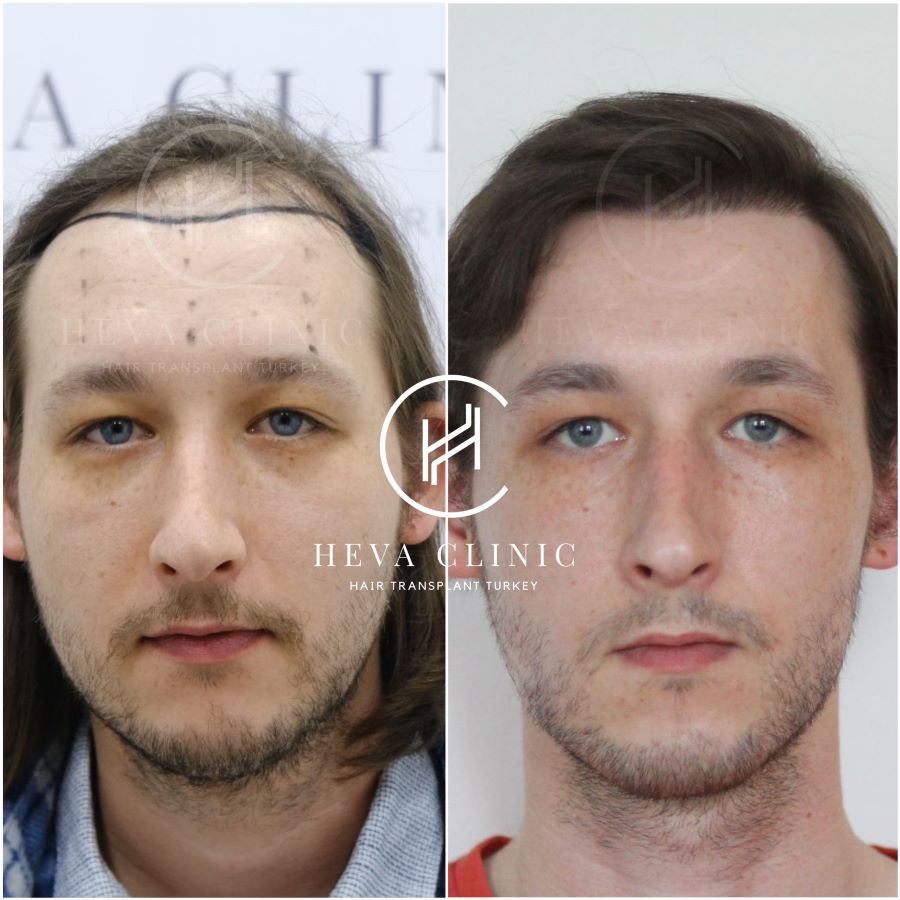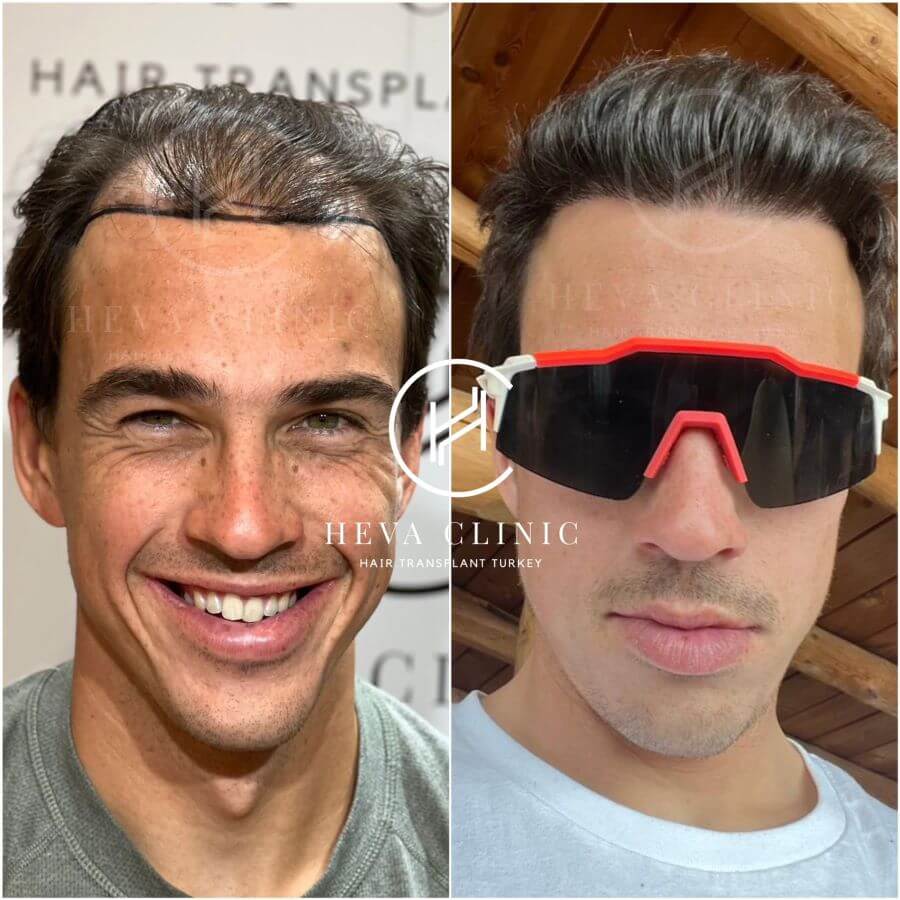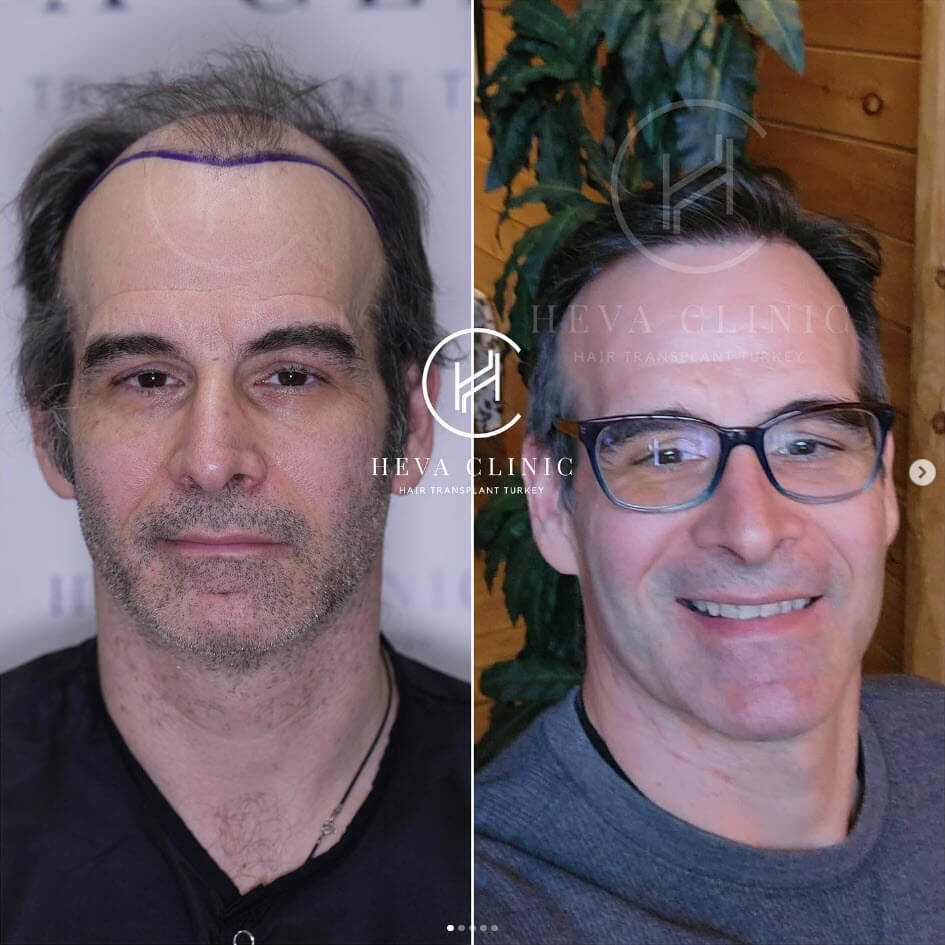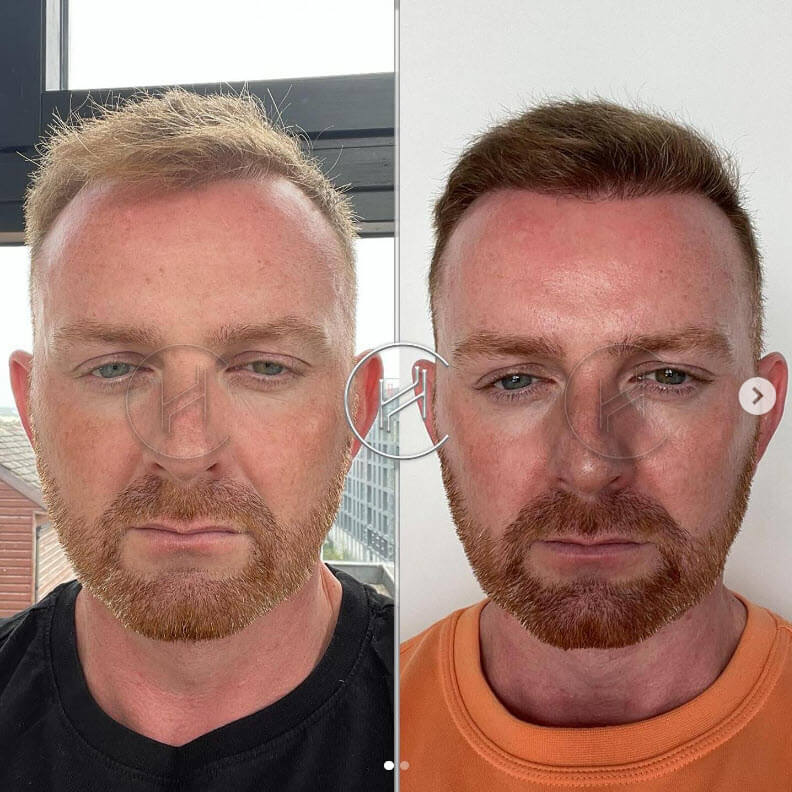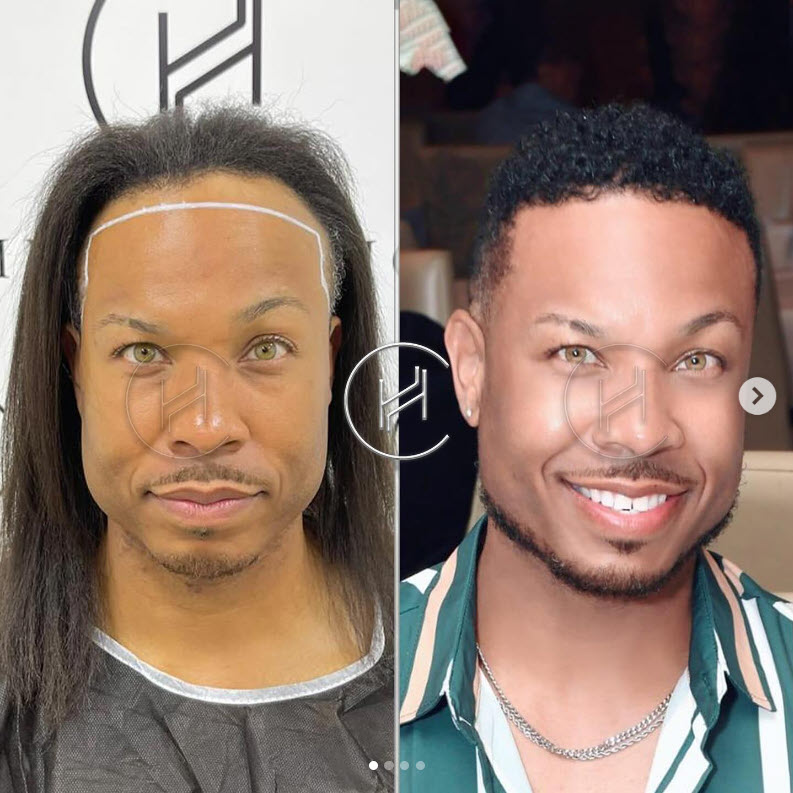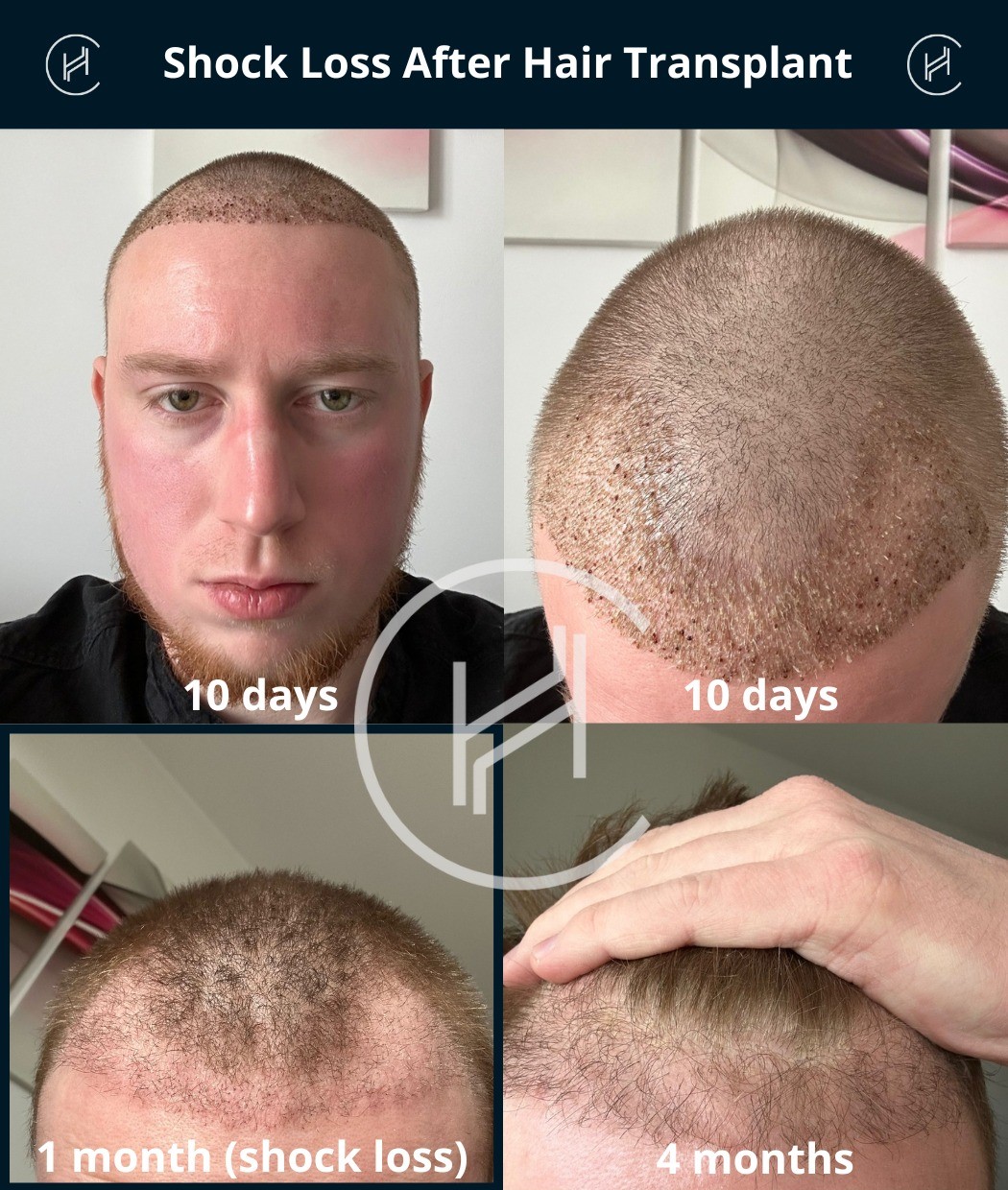
Hair transplant surgery is a transformative procedure that renews confidence to those struggling with hair loss and baldness. However, one aspect of post-surgery recovery that often surprises patients is the phenomenon known as “shock loss.”
Shock loss is a temporary condition characterized by the sudden shedding of hair in the recipient and donor areas. Shock loss can be alarming and disheartening for most people, especially after undergoing an advanced hair transplant procedure.
We will discuss the causes of shock loss, the expected timeline for recovery, and practical tips to manage and minimize its impact. By understanding the nature of shock loss and how to navigate through it, you can approach your hair transplant procedure with realistic expectations and informed confidence.
How Common Is Shock Loss After a Hair Transplant?
The majority of people who undergo hair transplants experience a phase known as shock loss. [1]
Shock loss affects individuals differently, with some experiencing as little as 10% shedding and others up to 90%. The extent of shock loss varies from person to person, and some may not experience it at all.
Shock loss can occur in the recipient area and donor area.
Shock loss in the recipient area generally occurs as the result of the reaction of the existing hair to the implantation of new grafts. This is especially common in people with less hair loss, especially women with diffuse baldness, where the implanted grafts can disturb nearby small hairs, causing them to fall out before regrowing.
Additionally, disturbance or damage to the delicate vasculature of the scalp and hair follicles associated with surgical intervention can also result in insufficient oxygen supply in the area for the following three weeks. This is another reason why you may experience shock loss after a hair transplant.
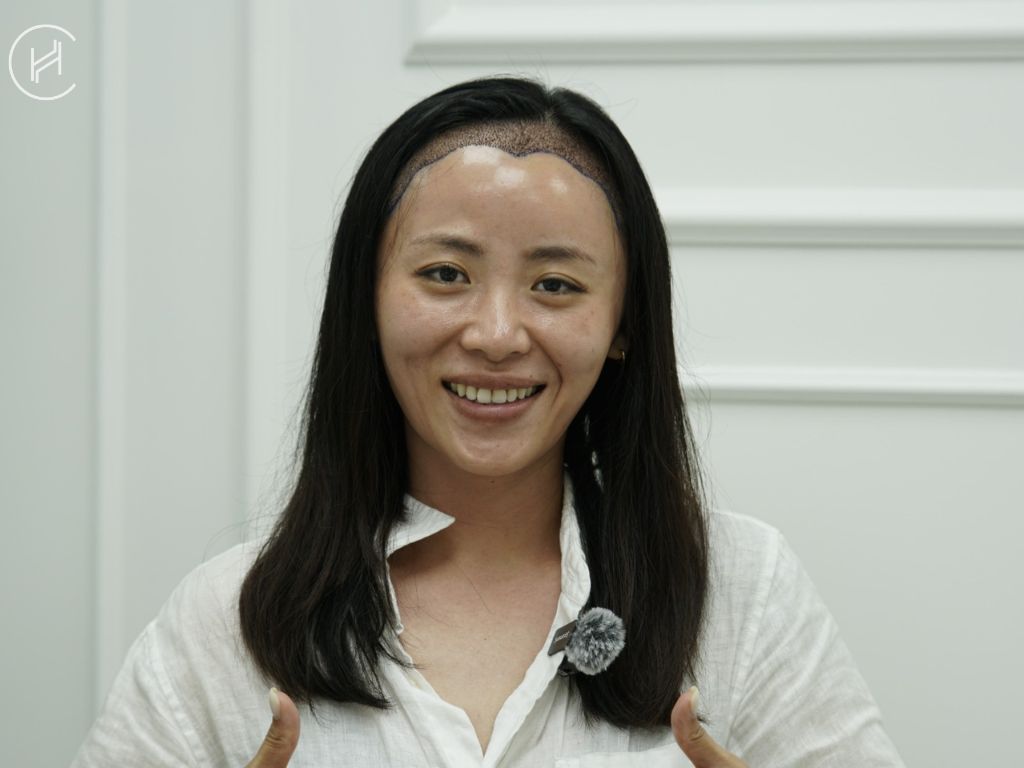
Shock loss in the donor area occurs due to the detachment of blood capillaries that connect the follicular units during harvesting. This micro-tear can induce reactive hair loss in the surrounding hair. This effect may get intensified when there is a nearby scar or if a vascular bundle is cut during the surgery. Shock loss in the donor area typically occurs within 3 weeks after the procedure. [2]
However, shock shedding is a temporary phase and is generally not viewed as a failure of the hair transplant procedure. In fact, it is often a precursor to the growth of new, healthy hair strands, signaling that the transplant is progressing as expected.
Being aware of the timeline of shock loss and when it is expected to begin and stop can help ease your anxiety and allow you to seek timely intervention in case it persists.
Hair transplant shock loss timeline
Shock loss can begin as early as 10 days after a hair transplant and may last up to 12 weeks.
By the second week, you might notice some hair shedding in the transplanted area. It is likely to continue for about one month after the surgery, by which time most of the transplanted hair may have shed. This is typically followed by the growth of new hair.
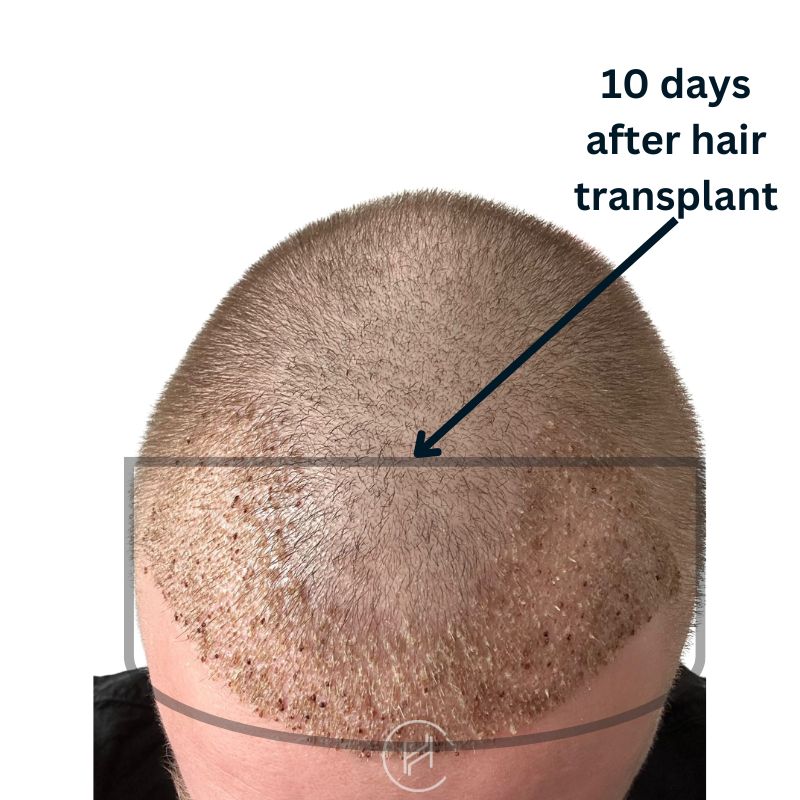
New hair growth usually starts 1 or 2 months after the shock-shedding phase ends. Initially, the new hair may appear frizzy and thin. But the hair gradually grows stronger and returns to its normal texture. During this period, each hair strand is expected to grow about 1 cm per month. Some hair strands may remain fragile for a few months, which is completely normal.
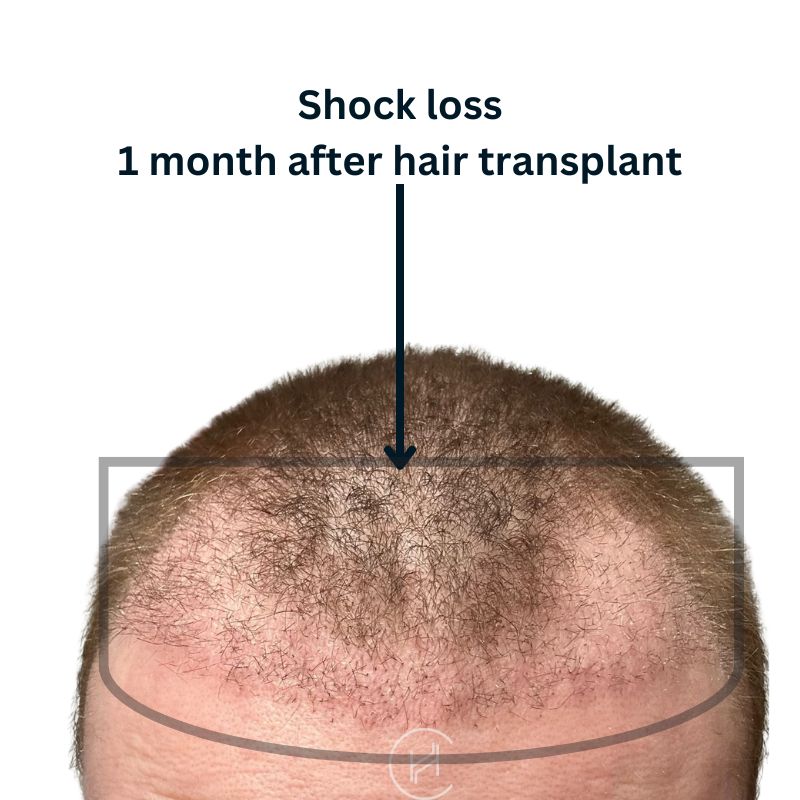
By the end of 10 or 12 months, most hair follicles fully adapt to their new environment. At this stage, the hair strands are likely to have thickened and achieved a more natural appearance. You will also notice the overall hair structure reaching the desired density. [3]
When does shock loss start after a hair transplant?
Shock loss can begin as early as 10 days after a hair transplant procedure. It occurs in both the donor area, typically at the back of the skull where grafts are taken, and the recipient area where the follicles are implanted.
How long does shock loss last after a hair transplant?
Shock loss usually lasts up to 12 weeks. After about 2 weeks, some hair shedding in the transplanted hairline may be noticed. By one month after the surgery, most of the transplanted hair is shed.
Does everyone get shock loss after a hair transplant?
Not everyone experiences shock loss after a hair transplant, although it is a common occurrence.
Shock loss affects individuals differently, with some experiencing minimal shedding and some having up to 90% hair loss. Also, some people may experience no shock loss.
Several factors can influence your likelihood of having shock loss after a hair transplant. For example, the method used for the hair transplant, such as Follicular Unit Extraction (FUE) or Follicular Unit Transplantation (FUT), can influence the risk as well as the extent of shock loss.
In addition, the condition of the scalp and existing hair can affect the risk of shock loss. People with well-nourished and hydrated scalp and hair are less prone to extensive shedding.
Moreover, following post-operative care instructions recommended by your hair transplant surgeon can help minimize shock loss to a great extent. This may include proper washing after the operation, avoiding physical trauma to the scalp, avoiding sweating, and using any recommended medications.
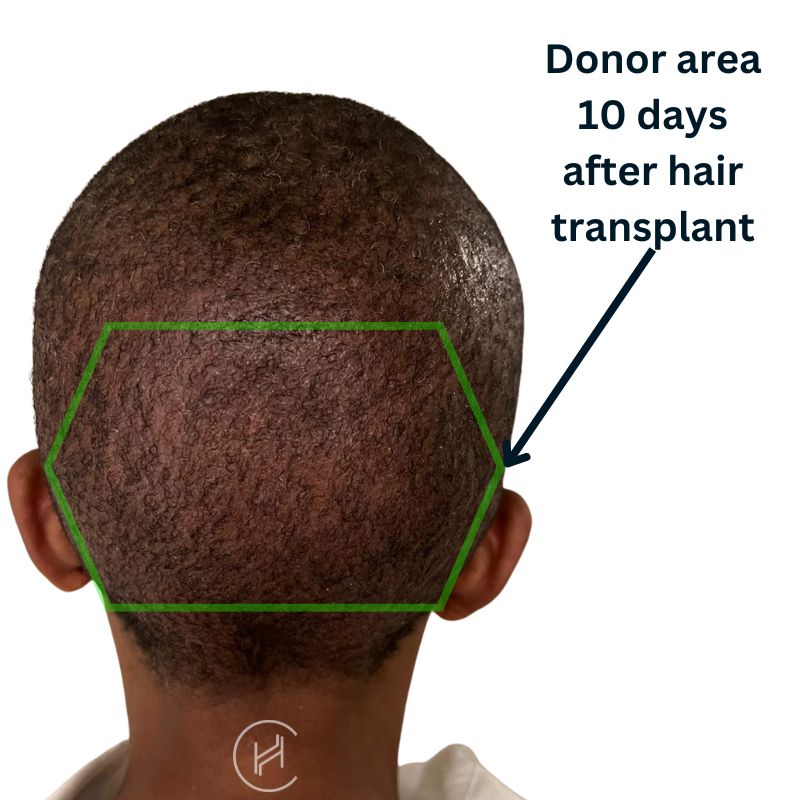
Do you experience shock loss in the donor area?
Not always, but yes, shock loss may occur in the donor area, typically at the back of the head, where the grafts are harvested.
Does shock loss affect existing hair?
Yes, shock loss can affect existing hair in the recipient area. The shock loss in this area may occur as a result of the reaction of the existing hair to the graft implantation. This is common in women who have diffuse thinning of hair all over the scalp because in this case the newly implanted grafts are more likely to disrupt the surrounding hairs, causing them to fall out before they eventually regrow.
How To Avoid or Minimize Hair Transplant Shock Loss?
Here are some helpful strategies to navigate the shock loss phase successfully and support the healthy growth of new hair after a hair transplant.

Healthy Nutrition
Even though this may sound a generic medical advise, it is especially more important to eat a healthy and nutritious diet during the early postoperative period and throughout the shock loss phase. Eating a balanced diet rich in essential vitamins, minerals, and proteins can help ensure that your new hair follicles are healthy and strong, thus minimizing shock loss after hair transplant. [4]

Hair Care Routine
It is advisable to adhere to the hair care routine recommended by your hair transplant specialist. You must use safe and nourishing hair care products that are designed to provide the necessary care for the transplanted and donor areas, ensuring that your hair follicles receive the proper attention. This will help support the growth of new hair and reduce shock loss.
This also marks the importance of getting a hair transplant at a reputable clinic, having a team of skilled and experienced medical professionals who can perform the procedure with higher precision and recommend the best ways to take care of your hair to minimize shock loss. You can talk to our hair transplant surgeons to learn more about how to avoid shock loss and improve hair growth after the procedure. [5]

Maintain Hydration
Staying well-hydrated is essential for supporting hair growth and preventing hair loss after a hair transplant. Adequate fluid intake helps to keep the scalp and hair follicles moisturized, supporting the nourishment and rejuvenation of transplanted hair follicles. This can aid in the nourishment of transplanted hair follicles, facilitating their recovery and growth, while reducing shock loss.

Choose Healthy Lifestyle Habits
Your lifestyle can influence your chances of having hair loss. It can also determine the extent of hair loss. Hence, choosing a healthy lifestyle is crucial to getting and maintaining the expired results.
For example, it is advisable to refrain from smoking, consuming alcohol, and drinking excessive caffeine. These substances can negatively impact the health of your scalp and transplanted follicles. It can also make the hair roots more sensitive to their new environment, potentially affecting the success of your hair transplant procedure.
In addition, you must avoid activities that cause excessive sweating. Strenuous exercises and situations that induce heavy perspiration can damage the delicate hair roots and delay your recovery. Hence, it is best to avoid intense sports or other sweat-inducing activities during the initial healing period to avoid shock loss.
Is hair transplant shock loss permanent?
No, shock loss after a hair transplant is not permanent. It is a temporary reaction where you might lose some of the transplanted hair for a short period after the procedure. This usually happens because the hair follicles are adjusting to their new environment.
Shock loss is a normal part of the recovery period following a hair transplant, and the hair typically starts to grow back within a few months. So, while it might be a bit disturbing to see some hair fall out initially after the procedure, it is usually just a temporary phase on the way to your final results.
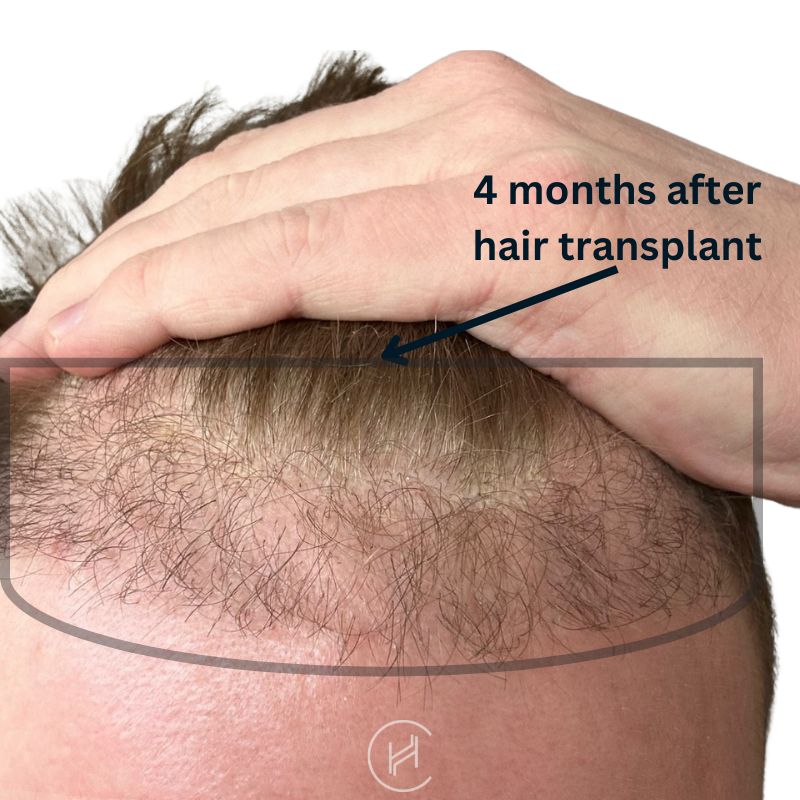
Will shock loss hair grow back?
Yes, the hair lost due to shock loss typically grows back. Shock loss is a temporary condition where some of the transplanted hair falls out as the follicles adjust to their new environment. This usually happens within the first few months after the transplant and resolves gradually over a period of time.
Most people see new hair growing after about 6 to 12 months of the procedure. The full results of the transplant become more apparent after around 15 to 18 months.
Do You Experience Shock Loss After a Second Hair Transplant?
Yes, you can experience shock loss even after a second hair transplant. It is a natural phase that most people experience after the procedure.
But just like with the first transplant, shock loss after a second transplant is also temporary. The hair that falls out will typically grow back as the follicles settle into the recipient areas and start growing normally again. Most people start seeing new growth within a few months, with the final results taking up to a year.
Sources
- https://www.ncbi.nlm.nih.gov/pmc/articles/PMC6371733/
- https://journals.lww.com/ijot/fulltext/2017/09030/Extensive_Donor_Site_Keloids_in_Follicular_Unit.10.aspx
- https://www.ncbi.nlm.nih.gov/books/NBK547740/
- https://www.ncbi.nlm.nih.gov/pmc/articles/PMC6785314/
- https://pubmed.ncbi.nlm.nih.gov/24017992/

